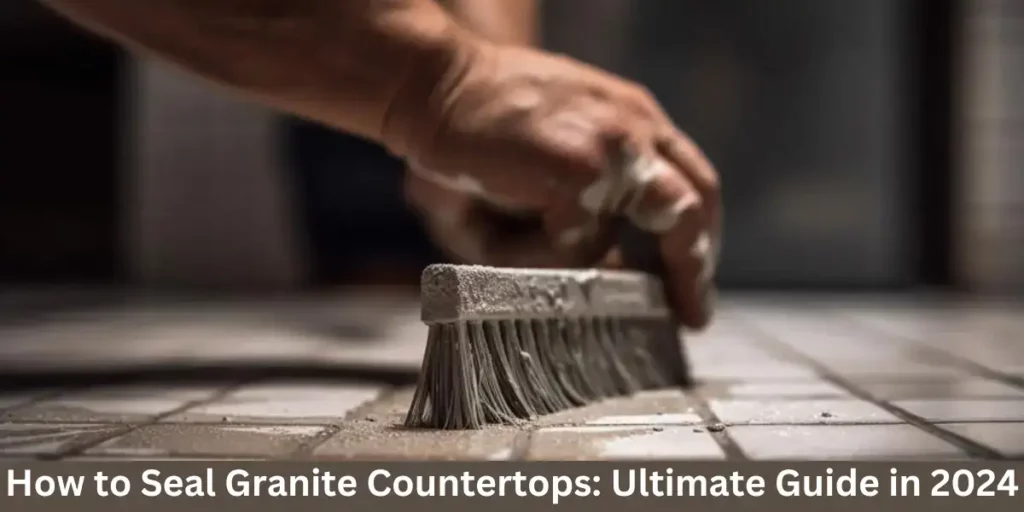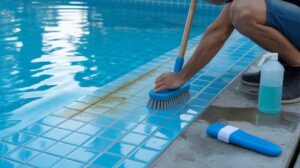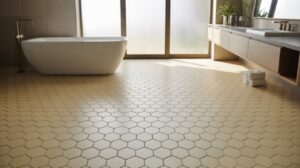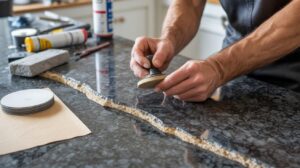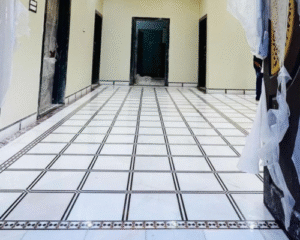How to Seal Granite Countertops
Sealing granite countertops is essential for preserving the natural beauty, durability, and resistance to stains that make granite a prized material in kitchens and bathrooms. In this guide, we’ll explore why sealing granite countertops is crucial, how to test your countertop to see if it needs sealing, and a detailed, step-by-step process for sealing granite. Plus, we’ll cover common sealing mistakes to avoid and how to maintain your granite for years to come.
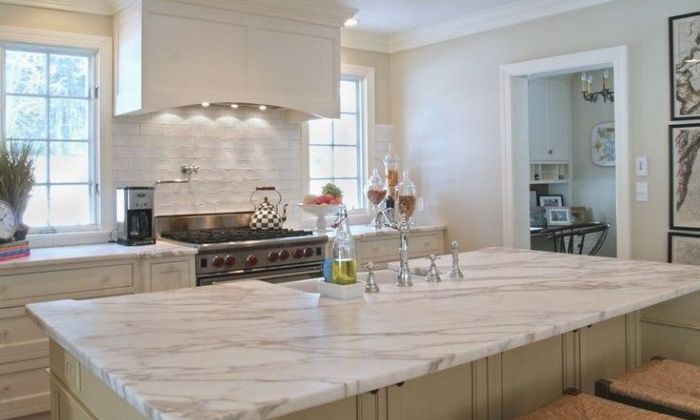
Table of Contents
ToggleWhy Sealing Granite Countertops is Important
Granite is a natural stone that, while durable, has tiny pores that can absorb liquids and stains. Sealing granite countertops prevents stains, enhances their appearance, and maintains their durability. Let’s dive into these benefits in detail.
Preventing Stains
Sealing granite countertops creates a protective layer that guards against liquids like water, oils, and other stain-causing substances. This barrier makes the surface more resistant to spills, preventing stains from penetrating the stone. Sealed granite keeps liquids, such as coffee, wine, and cooking oils, from leaving permanent marks, helping countertops retain their original color and beauty. Regularly sealing granite countertops helps maintain their appearance, preserving them from discoloration and ensuring they stay stain-free over time.
Maintaining Durability
Sealing granite is essential for more than just appearance; it strengthens the stone’s durability and longevity. A sealed granite surface is better protected against scratches, stains, and damage from daily use. Additionally, it creates a barrier against acidic substances, like lemon juice, which can otherwise etch or weaken the surface over time. By repelling these damaging elements, sealing helps maintain granite’s natural resilience and beauty, making it last longer and remain more resistant to wear and tear. Regular sealing is key to preserving the granite’s quality and ensuring it stays in excellent condition for years.
Enhancing Appearance
Sealing granite countertops brings out their natural shine and vibrant colors, enhancing the stone’s overall appearance. A sealed surface helps maintain the countertop’s polished finish, making its unique patterns and hues more prominent. This protective layer not only prevents dullness from everyday wear but also preserves the beauty of the stone for longer. By sealing, the countertop maintains a fresh, well-maintained look that elevates the aesthetic of any space.
How to Know if Your Granite Countertop Needs Sealing
To determine if your granite countertop needs resealing, perform a simple water test: place a few drops of water on the countertop and wait 15–20 minutes. If the water is absorbed and darkens the stone, it’s time to reseal; if it beads on the surface, your granite is well-sealed. Additionally, signs like dullness, discoloration, or easy absorption of liquids indicate that resealing may be necessary. A properly sealed countertop will repel liquids, keeping its finish intact, while an unsealed surface may appear dull and show stains or discoloration.
What You’ll Need to Seal Granite Countertops
Before sealing granite countertops, gather the following materials:
- Granite-safe cleaner
- Soft cloths or sponges
- A high-quality granite sealer (preferably a penetrating sealer)
- Gloves for protection
- Timer (optional)
Step-by-Step Guide to Sealing Granite Countertops
Follow these steps to properly seal your granite countertops and maximize their durability and shine.
Step 1: Clean the Countertop
Begin by cleaning the granite countertop well. Use a cleaner specifically made for granite to lift any dirt, oils, or food residue from the surface. This initial step is essential because applying sealer on an unclean surface can lock in particles, making the countertop appear dull and less hygienic. Spray the cleaner, wipe thoroughly, and ensure the surface is completely free of any residue. A clean granite surface allows the sealer to adhere properly, enhancing the countertop’s protection and shine. Taking the time to clean thoroughly ensures a successful sealing process and a longer-lasting finish.
Step 2: Allow the Countertop to Dry
Step 2 involves letting the countertop fully dry after cleaning. Any leftover moisture can weaken the sealer’s bonding ability, making it less effective. When the granite is entirely dry, the sealer can penetrate the stone’s surface, creating a stronger, more protective barrier. Make sure to wait until there’s no visible dampness, as even a slight amount can impact the sealing process. A dry countertop will help ensure the best possible results, maximizing the sealer’s durability and maintaining the granite’s appearance and resistance to stains.
Step 3: Apply the Sealer
To apply granite sealer, pour a small amount onto a clean cloth, sponge, or use a spray bottle if recommended. Gently spread the sealer across the countertop in even strokes, covering small sections at a time to avoid streaks. Be sure to apply a thin, uniform layer over the entire surface. Working in small areas allows for controlled application, reducing the risk of uneven coating or streaking. This step is crucial to ensure the granite’s surface is fully sealed, providing lasting protection against stains and moisture. Let it dry per the product’s instructions before any buffing or reapplication.
Step 4: Let the Sealer Absorb
Let the Sealer Absorb involves allowing the sealer to sit on the granite surface for 15-20 minutes. During this time, the sealer penetrates the stone, creating a protective barrier that helps resist stains, moisture, and damage. This absorption period ensures the sealer is properly absorbed into the pores of the granite, providing long-lasting protection. It’s important not to let the sealer dry on the surface, as this can lead to streaking or uneven coverage. After the absorption time, excess sealer should be wiped off for the best results.
Step 5: Wipe Off Excess Sealer
After applying the sealer, wait for 15-20 minutes to allow it to absorb. Then, use a clean, dry cloth to wipe off any excess sealer. It’s important to remove the extra product to prevent a sticky or hazy finish on the countertop. Wipe gently and evenly, ensuring no streaks are left behind. This step ensures the sealer has been properly absorbed, leaving a smooth, glossy finish that enhances the surface without any residue. Properly wiping off the excess is key to achieving a flawless result.
Step 6: Allow the Sealer to Cure
After applying the sealer, it’s crucial to allow it to cure fully, which typically takes about 24 hours. During this curing period, avoid placing any objects on the countertop or exposing it to moisture. This ensures the sealer adheres properly, creating a protective barrier against stains and damage. Any interference during the curing process can compromise the sealer’s effectiveness and longevity. Once the curing time is complete, the countertop will be ready for use, providing enhanced protection and maintaining its appearance for a longer time.
Common Mistakes to Avoid When Sealing Granite Countertops
When sealing granite countertops, avoid several common mistakes to ensure lasting protection and a smooth finish. First, always clean and dry the countertop thoroughly, as sealing a dirty or damp surface can trap dirt and lead to a poor finish. Use the right amount of sealer—too much can create a sticky surface, while too little won’t provide enough protection. Allow the sealer to absorb for 15-20 minutes for the best results, as wiping it off too early or leaving it too long reduces effectiveness. Lastly, choose a high-quality, penetrating granite sealer to avoid potential damage from low-quality products.
Tips for Long-Term Maintenance of Sealed Granite
To maintain sealed granite countertops long-term, clean them regularly with a granite-safe cleaner, avoiding harsh chemicals or acidic substances like lemon juice, which can wear down the sealer. Reapply sealer every 1-3 years, depending on usage, to ensure protection and luster. To check if resealing is needed, perform a water test every 6-12 months: sprinkle water on the surface and observe if it forms droplets or seeps into the stone. Proper care, including gentle cleaning and timely resealing, will keep your granite countertops looking beautiful and extend the effectiveness of the protective sealer.
FAQs
How Often to Seal Granite Countertops
Most granite countertops should be resealed every 1-3 years, depending on their usage and the sealer’s quality.
How Long to Wait After Sealing Granite Countertops
Wait 24 hours after sealing for the sealer to fully cure. This ensures that the sealer bonds with the stone effectively.
What Happens If You Don’t Seal Granite Countertops?
Unsealed granite can absorb liquids, leading to stains, discoloration, and possible damage to the stone over time.
How to Seal Granite Countertops DIY
Sealing granite countertops is a straightforward DIY project. With a quality granite sealer and the steps in this guide, you can easily seal your granite countertops yourself.
Can I Seal My Granite Countertop Myself?
Yes, sealing granite is a manageable DIY project. Follow the steps outlined above to ensure a thorough and effective seal.

